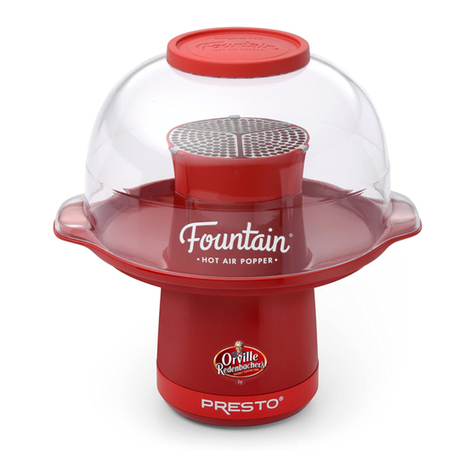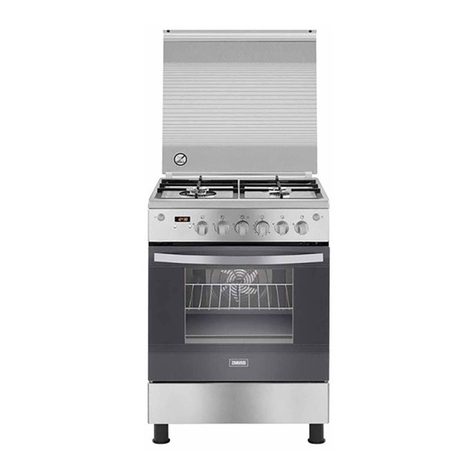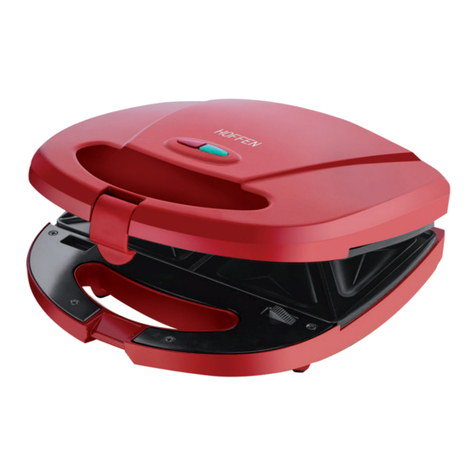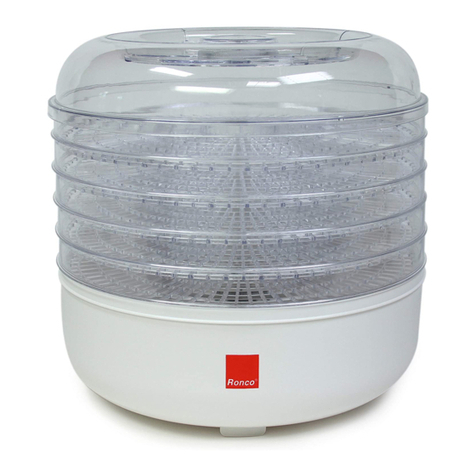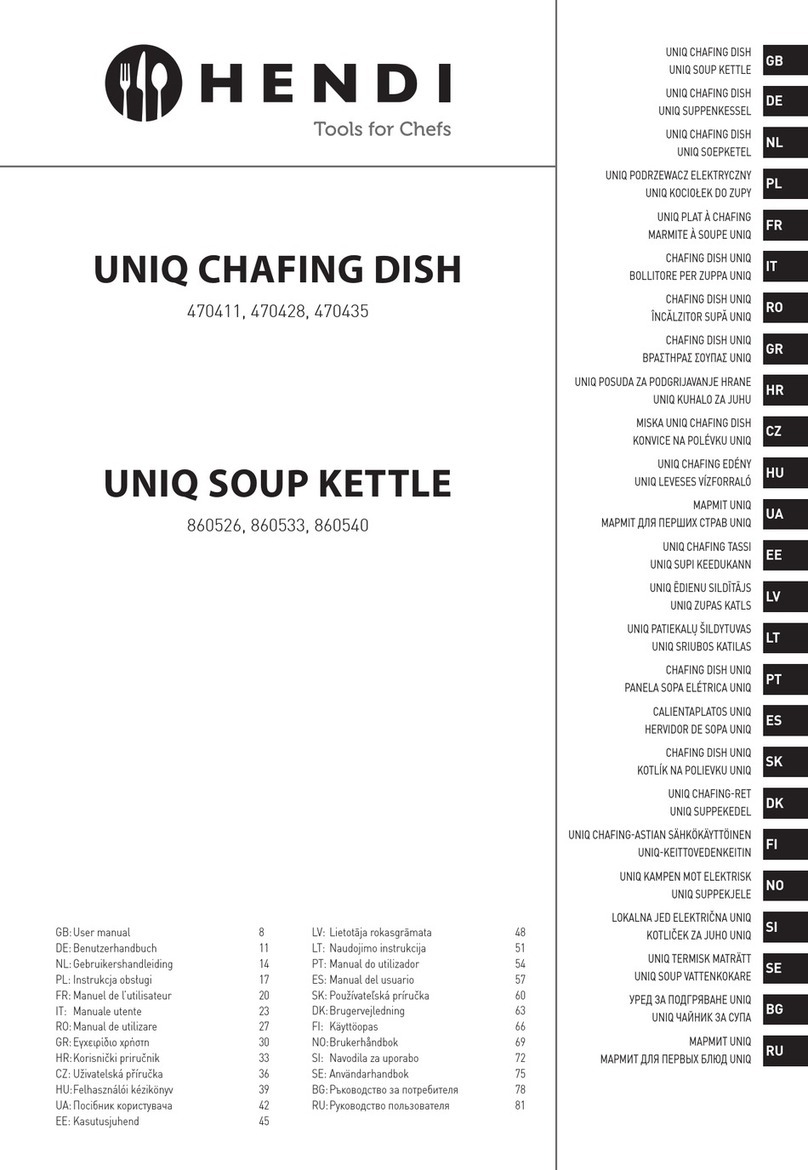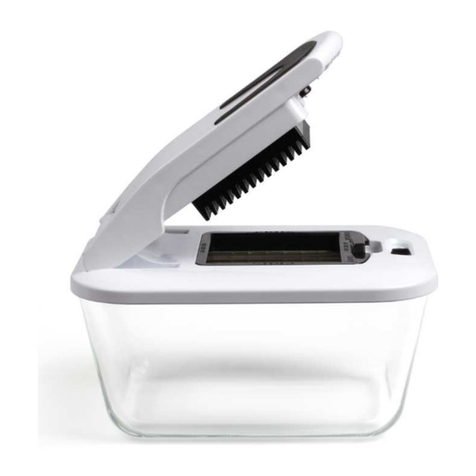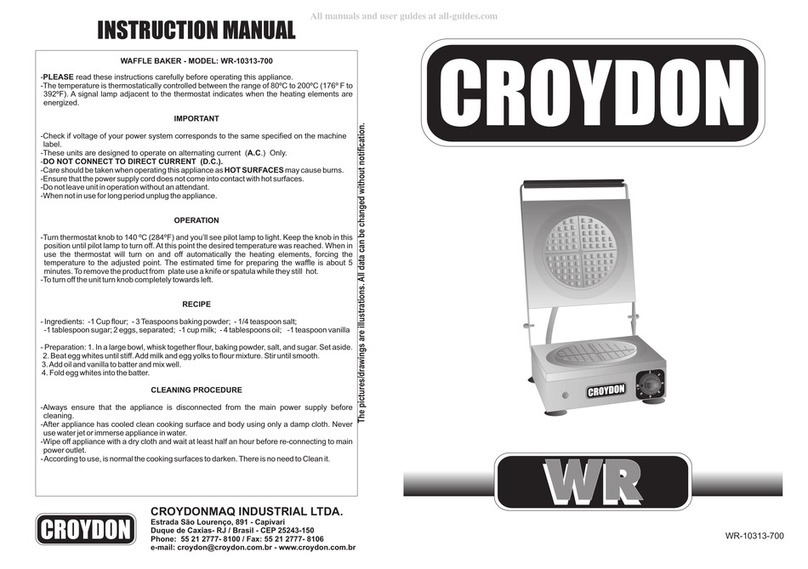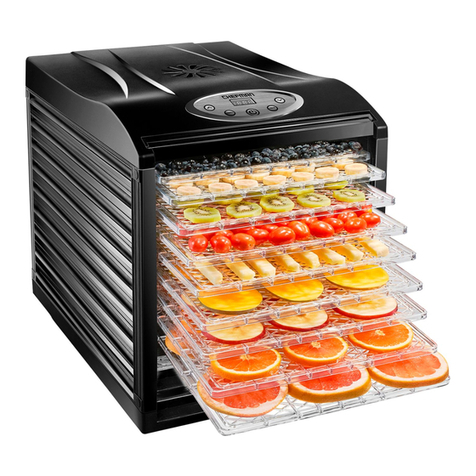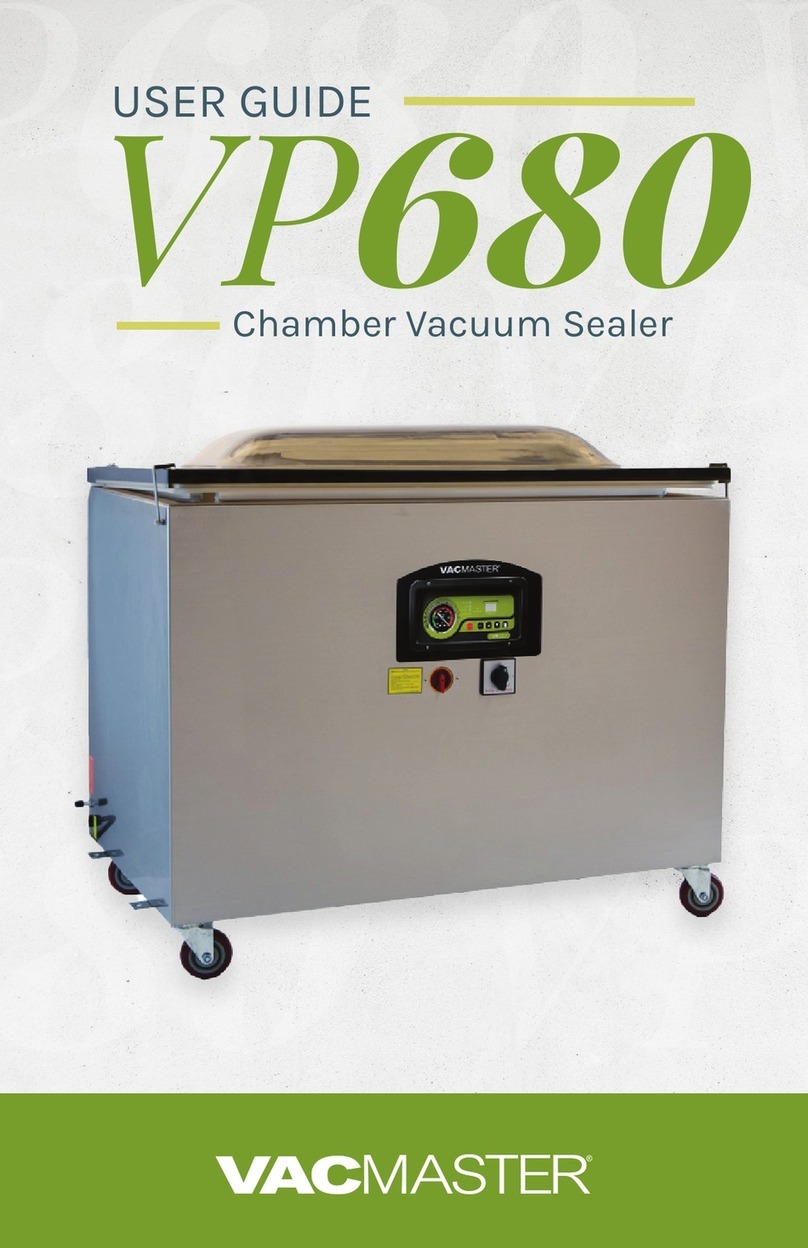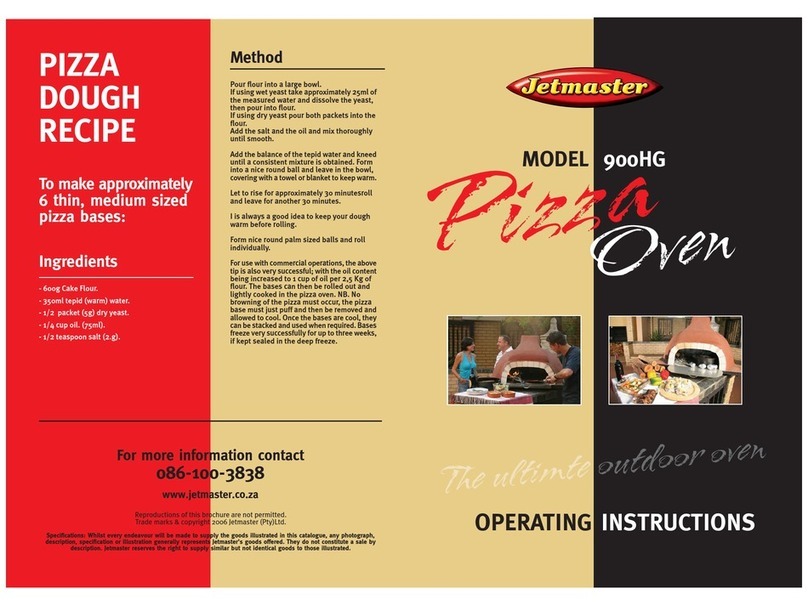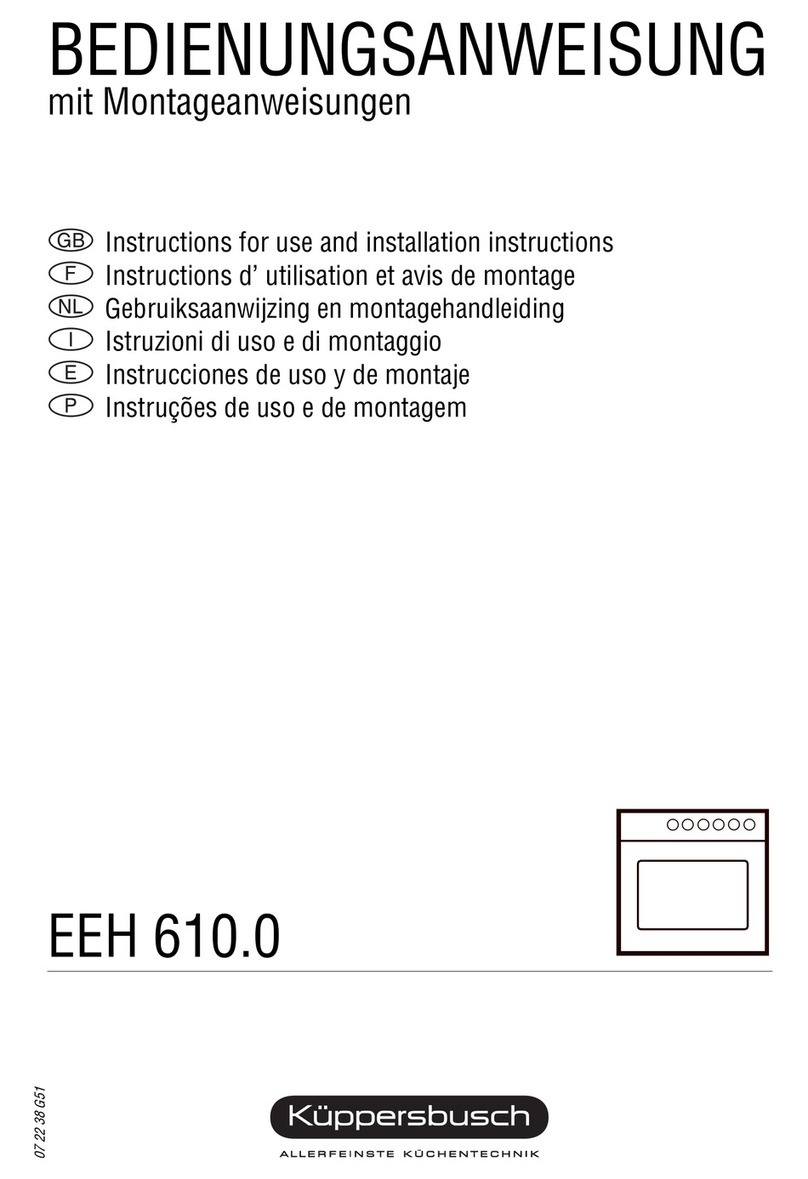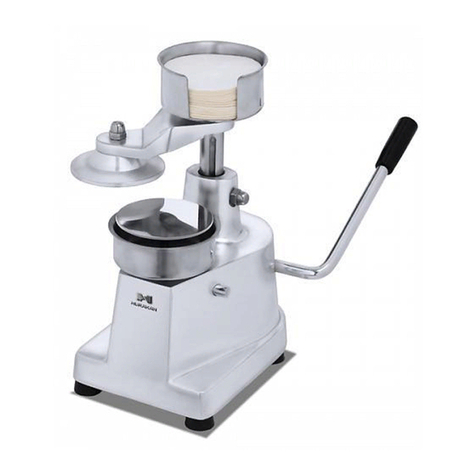
Page 2 3BE390838NU – 10/12
BONNET GRANDE CUISINE
Siège social:
Rue des Frères Lumière - Z.I Mitry Compans
77292 MITRY MORY Cedex
1 RECOMMENDATIONS
♦These appliances are for professional use, only qualified personnel should use them.
♦These appliances must be installed with sufficient ventilation to prevent the formation of an excessive
concentration of substances harmful for health within the premises in which they are installed.
♦The equipment is not designed to work in an explosive atmosphere. Accordingly it must not be installed
in an area subject to an ATEX directive.
♦The required flow rate of new air for combustion is 2 m
3
/h per kW of heat release (gas appliance).
♦The cooking appliances and their heating hobs reach high temperatures. BE CAREFUL, you may burn
yourself when using them, or handling accessories (grills, trays...).
♦The gas appliances are fitted with exhaust flues for burnt gases: NEVER COVER THE APERTURES IN
THE FLUE VENTS.
♦All types of cooking in water may be performed in bratt pans (stainless steel well). The optional bimetal
base is indispensable when the equipment is used intensively as a boiling pan. This base considerably
reduces the risk of corrosion.
♦Always work with the well in the low (horizontal) position.
♦Do not leave the appliance turned “ON” for long periods of time with an empty tank.
♦Ensure that fats or oils to be used for cooking are in good condition.
♦Well bases may reach temperatures of 350°C. BE CAREFUL, YOU MAY BURN YOURSELF when using
them.
♦When deglazing (adding water), be careful of splashing and spillage.
♦The use of high pressure water jets or sprays for cleaning is strictly prohibited.
♦To ensure long service life, safe and proper functioning, we recommended a full maintenance check twice
a year by factory trained engineers (Dismantling of burners, inspection and cleaning of venturis, cleaning
jets, adjustment of air rings, cleaning of vents, checking for possible leaks, checking control, regulating
and safety accessories…).
♦Note! In the event of a power cut or micro cut, the equipment will stop heating if the ram has not been
reset. To do this just press one of the Up / Down pedals.
♦The manufacturer certifies that the packaging meets the provision 94/62/CE (relating to packaging and
packaging waste of 20.12.94) and requests that the final installer (or user) observes the rules relating to
the removal of the packaging (recycling or reuse).
♦« According to article 6 of the decree of 20 July 2005 a marking giving the identity of the manufacturer
and the release on the market of the equipment after the 13 August 2005 is indicated on the appliance. »
« The Manufacturer has filled in the National Register. »
As per the legal provisions in force (article 21 & 22 of the decree 2005-829), the customer is responsible
for the obligations relating to the elimination of waste, namely:




